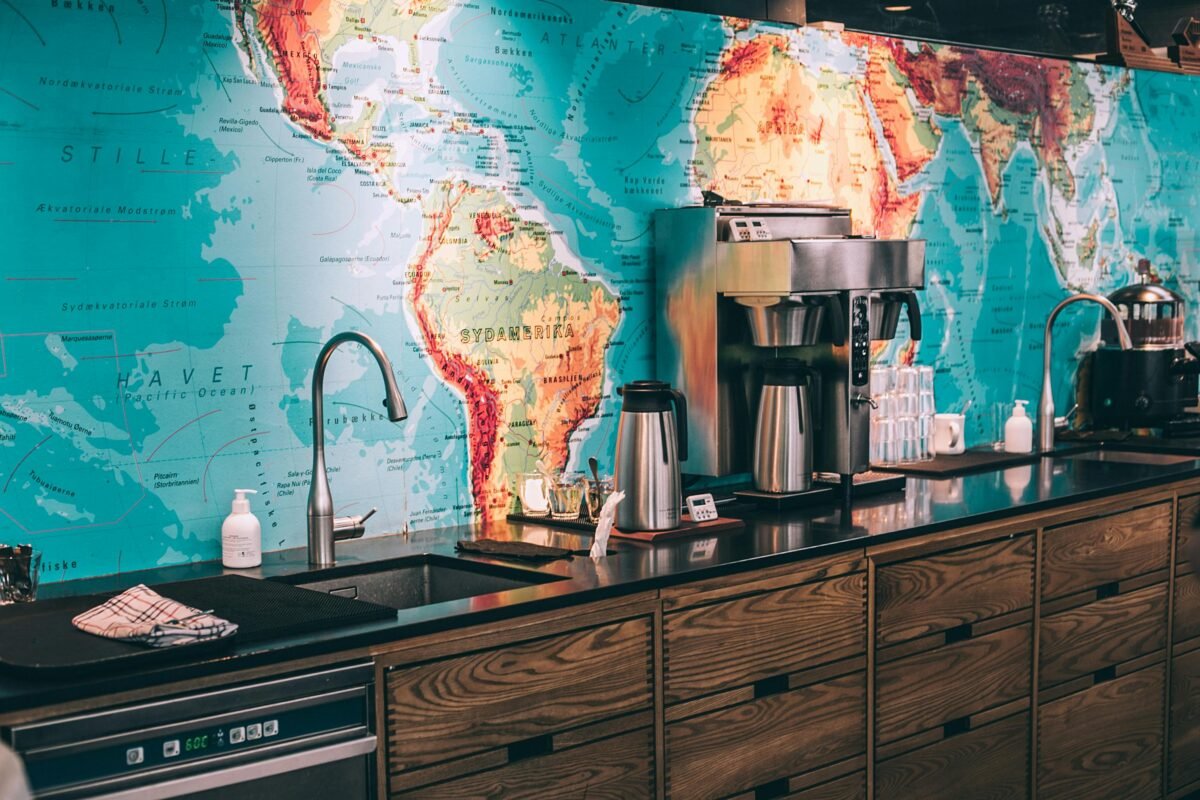Washington, D.C., isn’t just the capital of the United States—it’s also home to some of the most beautiful and accessible public parks in the country. In 2025, the city continues to lead the nation in urban park development, making it a must-visit destination for nature lovers, families, and anyone looking for a peaceful escape from city life. Here’s a detailed look at the top 10 public parks you shouldn’t miss.

Established in 1890, Rock Creek Park spans over 1,700 acres, making it the largest urban park in D.C. It’s a natural oasis that feels far removed from the bustling city streets, offering a mix of dense forests, meadows, and historic landmarks.
Hiking & Biking: The park has over 32 miles of trails suitable for hikers of all skill levels. The Western Ridge Trail is a favorite for experienced hikers, while the Valley Trail is more family-friendly.
Historic Sites: Visit Peirce Mill, a restored 19th-century grist mill, or the Carter Barron Amphitheater, which hosts live music and theater during the warmer months.
Stargazing: The Rock Creek Park Planetarium offers free educational shows, perfect for a family night out.
Bring water and bug spray—some trails are densely wooded.
Parking is limited near the main entrances, so consider biking or using public transit.
- Learn more: Rock Creek Park on Wikipedia
2. U.S. National Arboretum – A Botanical Wonderland

The U.S. National Arboretum, covering 446 acres, is a living museum of plants and trees, including rare and experimental species. It’s a peaceful retreat just a short drive from Capitol Hill.
Capitol Columns: Explore the iconic columns from the old U.S. Capitol building—perfect for photos.
Bonsai Museum: Offers one of the largest collections of bonsai trees outside Japan.
Walking Trails: Stroll through azalea gardens, maple collection, and pine forests.
Spring: Azaleas and cherry trees bloom.
Fall: Maple trees provide stunning autumn colors.
Entry is free, but check the Arboretum website for special exhibits and guided tours.
Wear comfortable walking shoes; some trails are gravel or slightly uneven.
- Learn more: Washington.org – D.C. Parks and Gardens
3. Tidal Basin – Cherry Blossoms and Scenic Views

The Tidal Basin, nestled between the Jefferson Memorial and the Washington Monument, is a stunning artificial reservoir famous for its cherry blossoms. It’s a top destination for both locals and tourists, especially in late March to early April.
Cherry Blossom Viewing: Over 3,000 Yoshino cherry trees line the basin—an iconic D.C. experience.
Paddle Boating: Rent a boat for a unique perspective of the monuments.
Photography & Picnics: The Tidal Basin offers some of the best scenic spots in the city.
Visit early in the morning or on weekdays to avoid crowds during peak bloom season.
Consider combining your visit with the nearby Smithsonian museums for a full-day outing.
- Learn more: 12 Best Parks in D.C. – Trolley Tours
4. Kenilworth Park and Aquatic Gardens – A Hidden Gem

Located in Northeast D.C., Kenilworth Park and Aquatic Gardens is a tranquil sanctuary known for its water lilies and lotus flowers, creating a truly unique landscape in an urban environment.
Boardwalk Trails: Walk above the wetlands and enjoy close-up views of the aquatic plants.
Birdwatching: Home to herons, egrets, and other migratory birds.
Photography: Summer is perfect for vibrant blooms, while fall brings migrating birds.
Bring binoculars for birdwatching and a camera for photography.
The park is quieter than other D.C. attractions, ideal for those seeking a peaceful experience.
- Learn more: Kenilworth Park – Cirque du Soleil Blog
5. Meridian Hill Park – History and Culture Combined

Also known as Malcolm X Park, Meridian Hill Park is a 12-acre urban gem in the Columbia Heights neighborhood. Its 13-basin cascading fountain is one of the largest in the U.S., and the park itself is a hub for culture and community.
Drum Circles: Summer Sundays see drum circles and live music.
Fitness & Yoga: Locals often host outdoor yoga classes.
Historic Monuments: Statues honoring Joan of Arc, Robert Emmet, and Thomas Hart Benton.
Ideal for late afternoon visits when cultural events are happening.
Bring a blanket if you want to sit on the grass and enjoy the ambiance.
- Learn more: Meridian Hill Park – Trolley Tours
6. The National Mall – Iconic & Central
No trip to D.C. is complete without visiting the National Mall, a 2-mile-long stretch of open parkland connecting the Lincoln Memorial to the U.S. Capitol. It’s not just a park—it’s the symbolic heart of the nation.
Monument Tours: Explore the Lincoln, Washington, and World War II memorials.
Museums Nearby: The Smithsonian museums line the Mall and are free to enter.
Events & Festivals: Hosts major events like Independence Day fireworks, protests, and cultural festivals.
Visit early in the morning to avoid crowds.
Comfortable shoes are essential—the Mall covers over 500 acres of walking space.
- Learn more: National Mall – National Park Service
7. Benjamin Banneker Park – Hidden Neighborhood Gem

Located in Southwest D.C., Benjamin Banneker Park is a small but well-loved community park offering open lawns, playgrounds, and basketball courts. It’s perfect for a local family outing.
Children’s Playground: Safe and shaded play areas.
Sports Courts: Basketball and tennis courts are available for public use.
Picnicking: Spacious lawns with picnic tables.
Weekdays are quieter—ideal for relaxation.
Check local community boards for events like weekend markets or outdoor yoga sessions.
8. Anacostia Park – Water & Outdoor Sports

Spanning 1,200 acres along the Anacostia River, this park is a haven for water activities and sports enthusiasts. It’s one of D.C.’s largest parks and perfect for active visitors.
Boating & Fishing: Kayaks, canoes, and fishing are popular.
Sports Fields: Soccer, baseball, and softball fields for local games.
Bike Trails: Over 10 miles of paved trails along the river.
Ideal for early morning jogs or sunset walks along the river.
Bring sunscreen—the trails are mostly open and sunny.
- Learn more: Anacostia Park – National Park Service
9. Dumbarton Oaks Park – Secret Garden Experience

Tucked in the Georgetown neighborhood, Dumbarton Oaks Park is a romantic, landscaped park with woodlands, streams, and hidden paths. Perfect for peaceful strolls or photography.
Walking Trails: Meandering trails connect gardens with forested areas.
Photography & Birdwatching: Ideal for nature lovers and Instagram-worthy photos.
Seasonal Foliage: Spring tulips and fall maples make it spectacular year-round.
Access the main gardens separately through Dumbarton Oaks Museum if you want a historic context.
Quiet mornings are the best time for reflection or sketching.
- Learn more: Dumbarton Oaks Museum & Park
10. Shaw Neighborhood Parks (e.g., Truxton Circle) – Urban Community Hubs

The Shaw neighborhood in Northwest D.C. has revitalized parks like Truxton Circle and Cardozo Recreation Center, blending community activities with green space.
Community Events: Farmers markets, fitness classes, and cultural events.
Sports & Recreation: Basketball courts, playgrounds, and open lawns.
Local Art: Murals and sculptures bring art to the park space.
Great for a local vibe—less touristy than central D.C. parks.
Evening walks are lively, with locals jogging or attending yoga sessions.
- Learn more: DC Department of Parks & Recreation – Shaw Parks
Final Thoughts
Washington, D.C. is more than its political landmarks—it’s a city with a rich network of public parks that cater to every interest. From sprawling natural escapes like Rock Creek Park to serene hidden gems like Dumbarton Oaks, there’s something for everyone. Whether you’re visiting for a weekend, planning a family outing, or just looking for a quiet spot to relax, D.C.’s parks offer beauty, culture, and community in every corner.
By exploring these ten parks, you’ll not only experience nature and outdoor recreation but also get a deeper appreciation for D.C.’s history, art, and local life. Remember to check seasonal events, wear comfortable shoes, and bring water and snacks to make the most of your visit.
Frequently Asked Questions (FAQ)
1. Are Washington, D.C.’s public parks free to enter?
Yes! Most public parks in D.C., including Rock Creek Park, the National Mall, and Meridian Hill Park, are free to access. Some special attractions, like guided tours or seasonal exhibitions at the Arboretum, may have a small fee.
2. What is the best time to visit D.C. parks?
Spring: Late March to early April for cherry blossoms at the Tidal Basin.
Summer: June to August for outdoor concerts, drum circles, and paddle boating.
Fall: September to November for fall foliage and cooler walking conditions.
Winter: Fewer crowds and crisp walks, especially in Rock Creek Park or Kenilworth Gardens.
3. Are D.C. parks family-friendly?
Absolutely! Parks like Benjamin Banneker Park, Rock Creek Park, and Meridian Hill Park offer playgrounds, picnic areas, and safe walking trails suitable for children.
4. Can I bike or jog in these parks?
Yes. Most parks, including Rock Creek Park, Anacostia Park, and the National Mall, have paved trails for biking, running, and walking. Some parks, like Kenilworth, have boardwalks or unpaved trails, so plan accordingly.
5. Are pets allowed in D.C. parks?
Yes, dogs are welcome in most parks as long as they are leashed. Popular dog-friendly parks include Meridian Hill Park and Rock Creek Park. Make sure to follow local regulations and clean up after your pet.
6. Where can I find events or seasonal activities in D.C. parks?
Visit the DC Department of Parks and Recreation for updated schedules on concerts, festivals, fitness classes, and guided nature walks.
7. How accessible are these parks for people with disabilities?
Most major parks, including the National Mall, Tidal Basin, and Meridian Hill Park, have paved paths, ramps, and accessible restrooms. Check individual park websites for detailed accessibility information.




